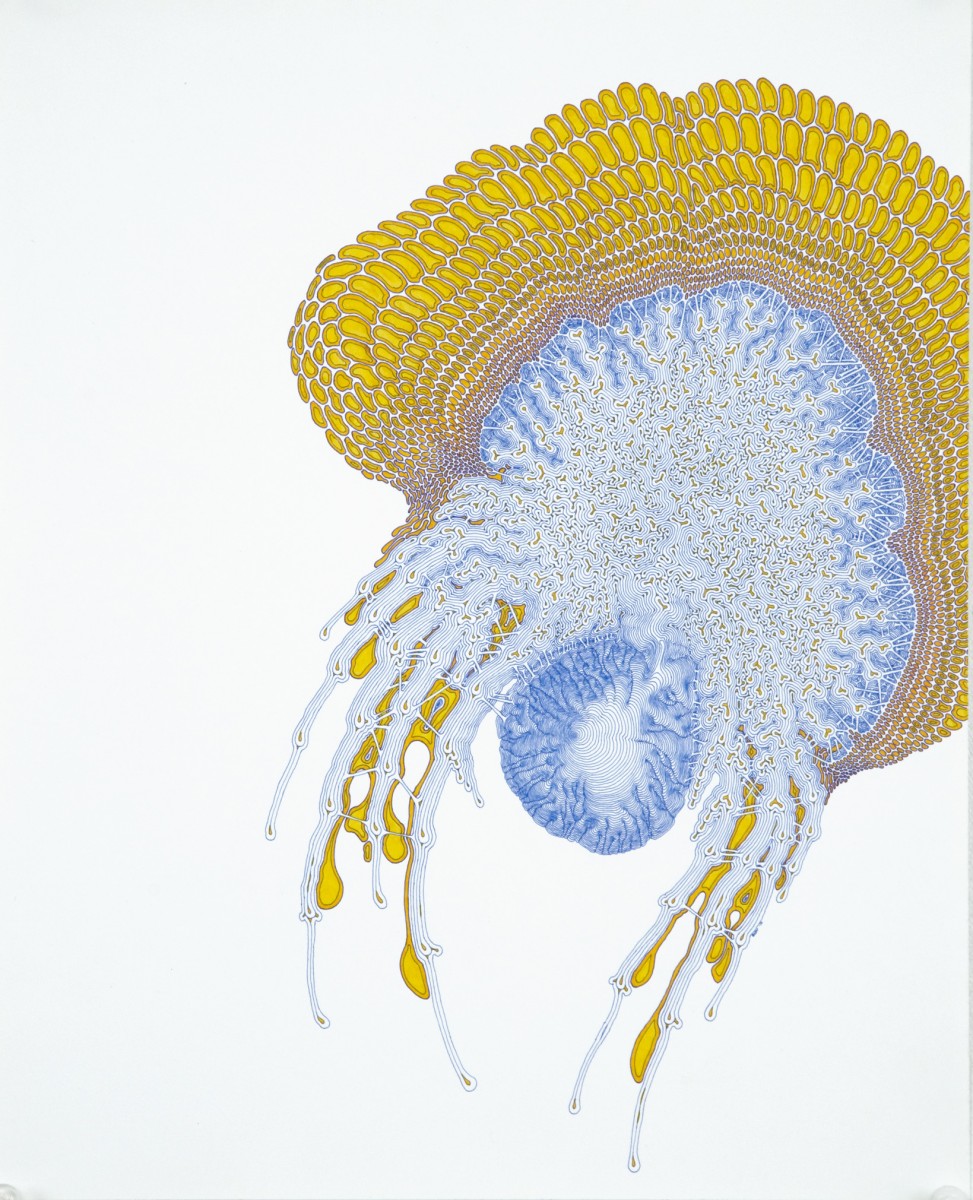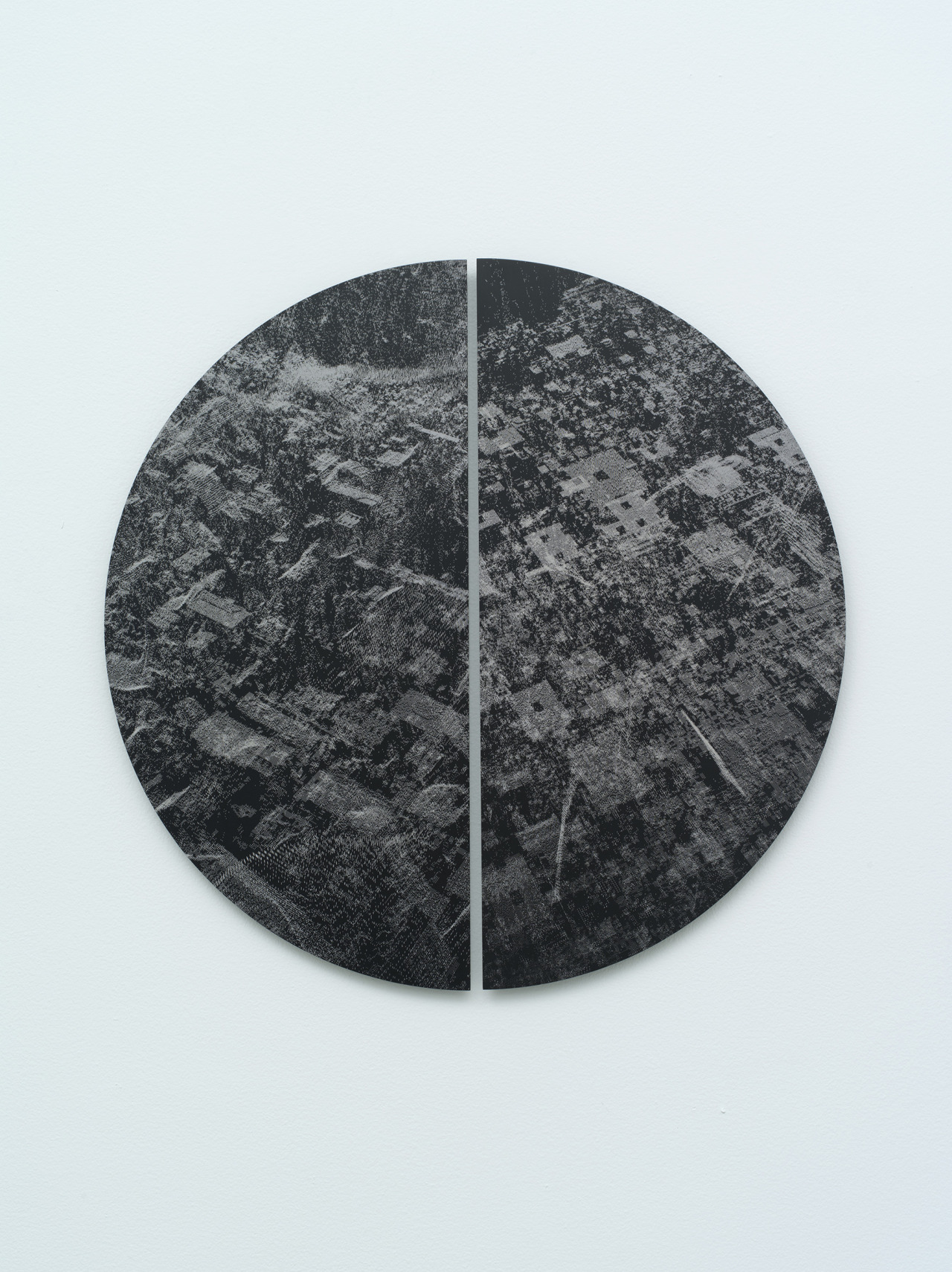Looking Outwards 3
Jean Pierre Herbert

Sand Apparatus
Sand Apparatus is a kinetic device (much like a plotter) used for making artwork which involves sand on a constructed, wood platform with a magnet underneath, and a metal ball. This piece maintains the zen of a Japanese garden by introducing this ball in a non-obtrusive manner, completely void of anything mechanical to the viewer. The process is magical, and the lightness and form of sand provides the “blotter drawing” with a more spacial approach.
–
Roman Verostko

Diamond Lake Apocalypse
Diamond Lake Apocalypse is presented as an open book, embodying the idea of a precious object filled with algorithmic, blotted drawings. The artist means for the book to take on the character of an illuminated manuscript, with each page carefully constructed by the artist as though he were a monk. The patterns and colours are mesmerizing, and the layout of the pages speaks in more in an alien language of words and symbols rather than just an image.
–
Giuseppe Randazzo

Stone Fields is a computational project, coded in a C++ console application that outputs a OBJ 3d file, where virtual stones are created from several fractal subdivision categories. These imagined landscapes come across as actual stones at first glance, and there becomes this play between nature and the sterility of the virtual. It is like a mental, non-physical ordering and manipulating of the gravel below a park bench, something done very much so unintentionally and out of involuntary need.






 “Enforced Toxification” 2008, Ink and Acrylic on Paper
“Enforced Toxification” 2008, Ink and Acrylic on Paper
 “Internalized Wobularity” 2010, Ink, Watercolor and Acrylic on Paper,
“Internalized Wobularity” 2010, Ink, Watercolor and Acrylic on Paper,
 “Substrate” 2013, Laser etched anodized aluminum
“Substrate” 2013, Laser etched anodized aluminum



